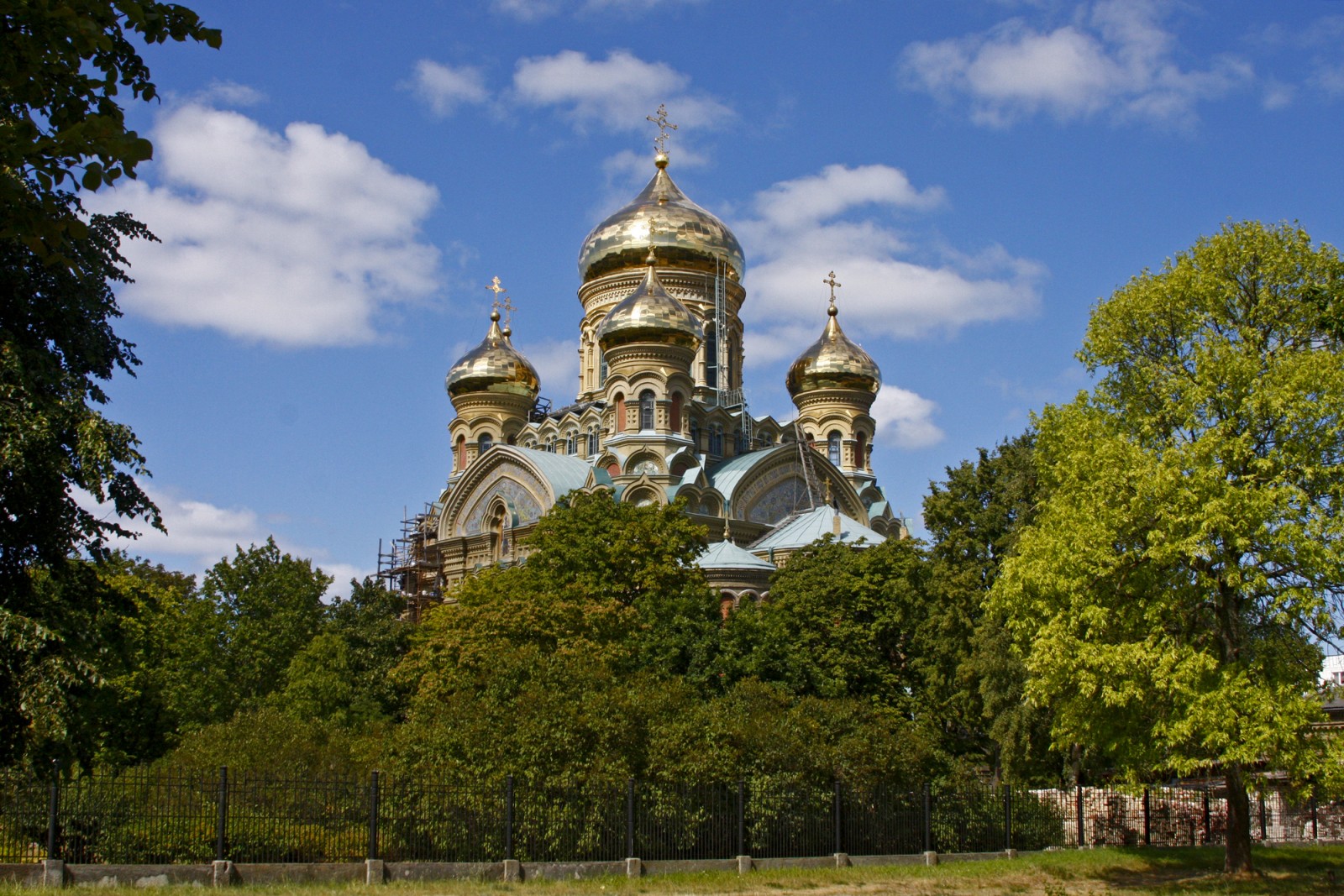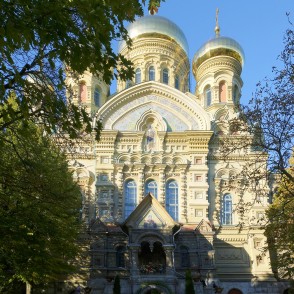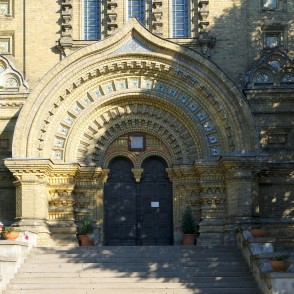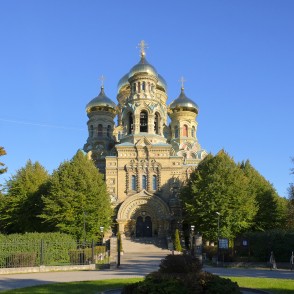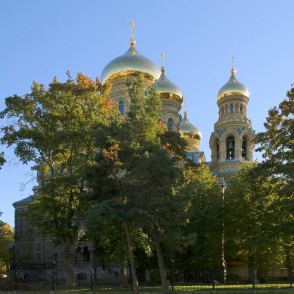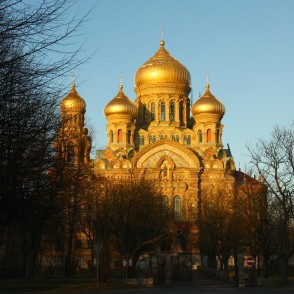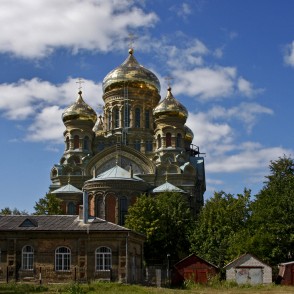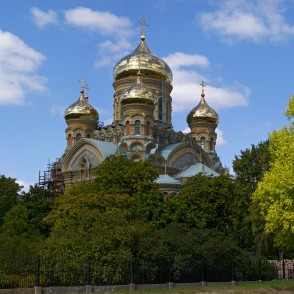The St. Nicholas Russian Orthodox Naval Cathedral is the dominant visual and spiritual feature of Karosta sharply contrasting with the surrounding panel apartment blocks.
Russian Tsar Nikolai II and family participated in the ground-breaking ceremony when construction began in 1901. The church was built according to the principle of the 17th century Russian Orthodox churches – one central dome and four domes on the sides.
At the beginning of World War One, many of the cathedral’s objects, such as bells and icons, were taken to Russia. The rest was looted by soldiers of the occupying German army.
After World War Two, the USSR occupying army opened a gym, cinema and entertainment centre for sailors and soldiers. The central dome was sealed with concrete in order to stop the fantastic acoustics from interfering with the sounds of the films being watched.
The military left the cathedral in September of 1991 and the first church service was held there already in December.
liepaja.travel
The St Nicholas Naval Cathedral (Latvian: Sv. Nikolaja Jūras katedrāle) (Russian: Свято-Николаевский морской собор) is a Russian Orthodox cathedral church located in the area known as Karosta in the north of Liepāja in Latvia.
Construction
The cathedral was built on the style of 17th century traditional Russian churches with a central dome representing Christ with 4 smaller domes representing the four evangelists on designs made by V. Kosyakov. It was built to serve as the cathedral church of the Russian navy stationed in Karosta. The cornerstone was laid in the presence of a number of dignitaries including Tsar Nicholas II of Russia. The cathedral was completed two years later in 1903 and was formally consecrated and dedicated to the patron saint of seafarers in the presence of the Tsar himself.
WWI
The cathedral's belongings, including bells and icons, were transported to Russia during the outbreak of WWI, for safe keeping. The rest of the items were stolen by the Germans who invaded Latvia. After independence in 1918, the church was converted into a Lutheran church to serve the Latvian navy personnel.
Soviet Occupation
The cathedral continued to function as place of worship until the Soviet re-occupation of Latvia in 1944. The soviets prohibited anyone entering the Karosta area which was turned into a secret soviet navy territory. Consequently, the cathedral was converted into a gymnasium, a cinema and a recreation and entertainment room, referred to as the 'red corner' for the needs of sailors and soldiers. The interior of the central dome was closed to eliminate the Acoustics which made it difficult for navy personnel to hear movies in the cinema.
Independence
After Latvia's independence from the Soviet Union in 1991, the cathedral was given back to the Latvian Orthodox Church under the authority of the Russian Orthodox Church with the first service taking place that same year in December.
Mosaics and Paintings
The mosaics were designed by V. Frolov, while the wood carvings and gilding of the iconostas were made by P. Abosimov. The paintings of the central and the right-side altar spheres were made by F. Railyan and the frescoes of the left-side altar spheres were painted by M. Vasilyev.
en.wikipedia.org
The St.Nicholas Cathedral is the visual and spiritual dominant of the whole Karosta area. The Cathedral has been designed and erected in the style of the 17th century Russian orthodox churches.
Erection of the Cathedral began in 1901. That same year the Russian Tsar Nicholas II with his family members, courtiers and supreme officers took part in the solemn ceremony of consecration of the foundation stone of the Cathedral. The first service in St.Nicholas Cathedral and its consecration took place in 1903. The Russian Tsar Nicholas II and his family and courtiers also took part in this ceremony.
On the outbreak of World War I, numerous items were evacuated to Russia including the bells and icons, and the valuables that had were left were pillaged by the German occupiers. During the 1920s and 1930s, under the Latvian government, the Church was adapted to the needs of the Liepāja garrison's Lutherans.
Finally, upon the conclusion of the Second World War, the Soviet Navy base in Liepāja was made a secret territory and was closed to public. So they established a sports hall, a cinema and the so-called "red corner" (a recreation and entertainment room) here in the former Cathedral for the needs of sailors and soldiers. It was then that the sphere of the central cupola was bricked up, to destroy its great acoustics and allow the naval personnel to hear their films. The militaries left the Cathedral in September 1991. The first church service in the regained Cathedral was held in December the same year.
www.kurzeme.lv
